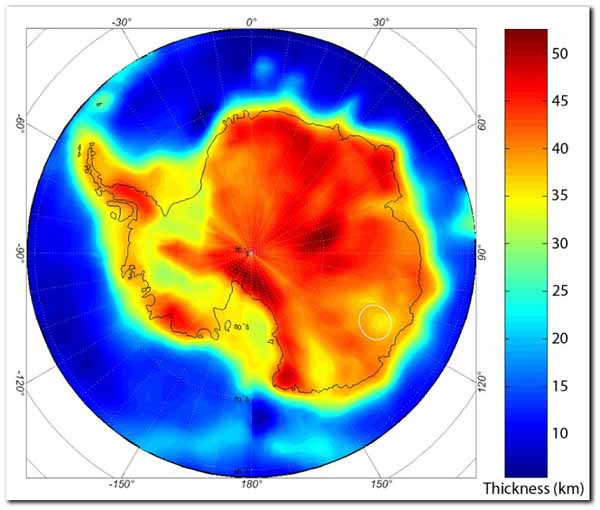Here's what made conspiracy theorists come up with that WWII UFO theory about Antarctica
The answer involves dinosaurs, not Nazi flying saucers.
A group of conspiracy theorists called Secure Team 10 has been peddling a wonderfully imaginative idea about a Nazi WWII camp for flying saucers located at a site in Wilkes Land in East Antarctica. The anomaly that the theorists picked up on in fact marks a possible cause of the greatest extinction event ever to happen on Earth.

It's true that there is a gravitational anomaly at Wilkes Land that was picked up by satellite measurements. Scientists discovered the anomaly in 2006, suggesting that there was a large asteroid impact site in the land that lies about 1.6 kilometres beneath the East Antarctic Ice Sheet.

The anomaly that the scientists detected was a mascon – a geological phenomenon found when an asteroid slams into the surface and causes the Earth's mantle to push up into the crust beneath the crater.
What was the Great Dying?
- The Great Dying – also known as the Permo-Triassic mass extinction – happened about 250 million years ago.
- It killed the vast majority of all species on the planet, wiping the slate almost clean for evolution.
- About 95 per cent of sea creatures and 70 per cent of land animals died in the event.
- The Wilkes Land impact crater is one hypothesis for what caused the Great Dying, but it's not the only one.
- Other suggested causes are the Siberian Traps – a vast swathe of rock in northern Russia, which is believed to be the remnant of enormous volcanic activity.
- A period of millions of years of volcanic eruptions could have changed the climate enough to cause the Great Dying.
Source: University of Bristol
Such features are common the moon, which is not geologically active, but on Earth they tend to get "scrubbed" out at the surface, study author Ralph von Frese of Ohio State University in the US said at the time.
The crater was measured to be 480km across, making it more than twice the size of the Chicxulub crater in Mexico that is believed to mark the impact of the asteroid that killed the dinosaurs at the end of the Cretaceous period, 65 million years ago.
The Wilkes Land crater is thought to be the site of impact of the asteroid that caused the Great Dying, about 250 million years ago, according to the research that was first reported in 2006.
"This Wilkes Land impact is much bigger than the impact that killed the dinosaurs, and probably would have caused catastrophic damage at the time," study author Ralph von Frese said.
"All the environmental changes that would have resulted from the impact would have created a highly caustic environment that was really hard to endure. So it makes sense that a lot of life went extinct at that time."
Really, no Nazi flying saucers required
© Copyright IBTimes 2025. All rights reserved.






















